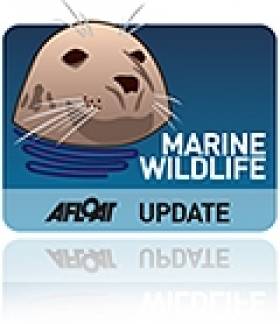Displaying items by tag: Killarney shad
Origins Of Fish Unique To Kerry Unveiled By Marine Scientists
#NewFish - A team of marine scientists from UCD, the University of Salford and Inland Fisheries Ireland (IFI) has reconstructed the origins of the endangered Killarney shad.
The fish is known locally as the ‘goureen’ - but many of the anglers who fish for salmon and trout on Lough Leane in Co Kerry are unaware of its presence in their waters.
The Killarney shad is a member of the herring family and lives in shoals, which often show up on the sonar screens of the water buses plying tourists around the lake.
But unlike its close relative the twaite shad, which is known to anglers who fish the tidal waters of the River Barrow at St Mullins in May each year, the Killarney shad believed to be unique to the waters of Lough Leane.
And the new research for the first time provides genetic evidence for the timing of colonisation of the lake by the species after the last glaciations ended.
While the researchers have shown the Killarney shad to be present In Lough Leane for thousands of years, the fish was only formally reported in 1911 by fisheries scientist Tate Regan.
According to IFI, the link between the rivers and sea can become blocked by natural processes or human intervention, such as the building of locks or weirs along a water course. Consequently, once ocean-borne fish may become trapped or ‘landlocked’ in freshwater lakes.
There are several examples of landlocked fish populations which have since adapted to living permanently in freshwater environments, but the evolutionary processes that lead to their origin have rarely been reconstructed.
The existing population of Killarney shad is now genetically isolated from its recent ancestor, the twaite shad. By examining DNA from fish caught in Lough Leane and shad from other areas, researchers were able to show that after the end of the last ice age, some twaite shad were trapped in the lake on two separate occasions.
One coincided with the retreat of the glacial ice sheet from the south west of Ireland some 16,000 years ago; and the other occurred around 7,000 years ago. The descendants of those colonisers interbred, giving rise to the Killarney shad.
Currently there are no natural or manmade barriers in the River Laune connecting Lough Leane to the sea – but the Killarney shad has become so adapted to its new habitat that no migration to the sea is needed for the completion of its life cycle.
While there are landlocked shad populations in the Italian Lake District and in Greece, the Killarney shad is the only example of landlocked shad to have survived in north western Europe. The fish is listed as ‘vulnerable’ on the recent Irish Red Data Book.
Surveys conducted by IFI since the early 1990s have confirmed the presence of the fish in Lough Leane in significant numbers, as well as successful spawning on an annual basis. But the major concern is that a catastrophic environmental event in Lough Leane could eliminate the entire genetic pool, given that the fish is only present in one location.
The Killarney shad is listed in the EU Habitats Directive and Killarney National Park has been designated as a Special Area of Conservation (SAC) for the shad.
"This fish is a unique element of Ireland’s aquatic biodiversity," said Minister of State Fergus O'Dowd. "The present research shines more light on this uniqueness, confirming that ‘evolution’ or change within a species is not something fixed and in the long-distant past."
The minister congratulated the research team on "these very remarkable findings", and noted that IFI head of R&D, Dr Cathal Gallagher, pointed to the importance of State agencies working with third-level institutions to combine applied and academic expertise.
The present research was funded by the Irish Research Council, with support from IFI, and was part of Dr Ilaria Coscia’s PhD, now at Leuven University, Belgium, supervised by Prof Stefano Mariani, now at the University of Salford.
























































